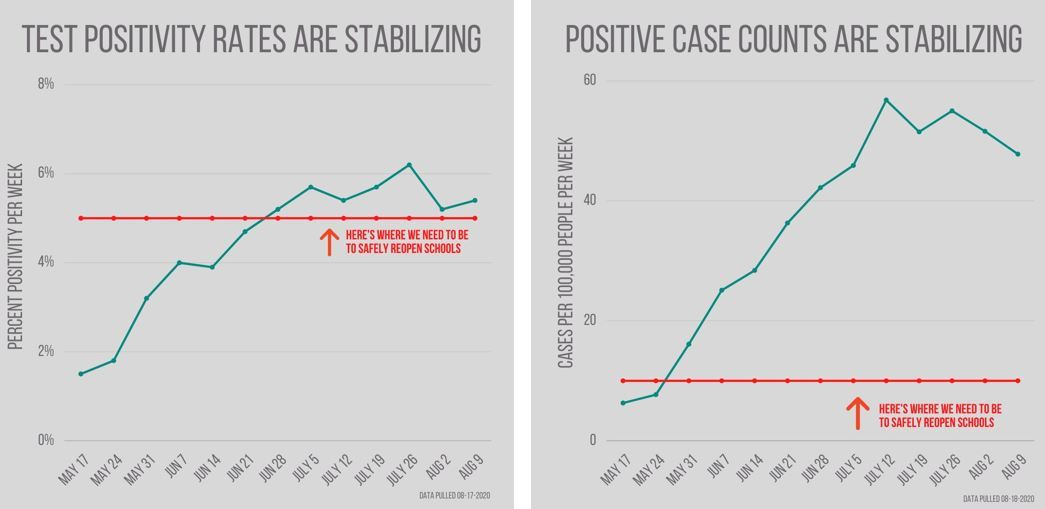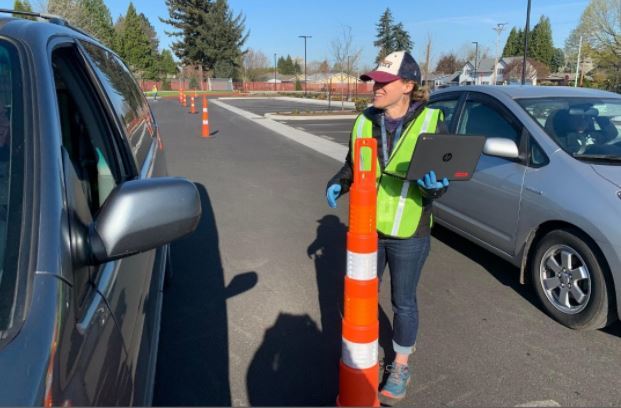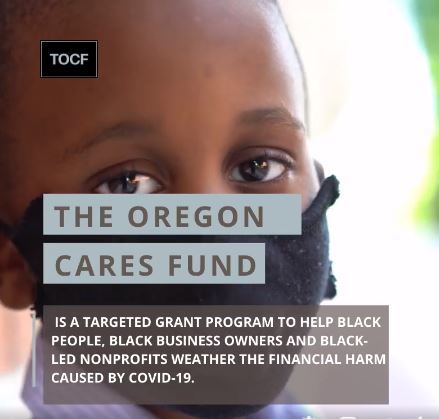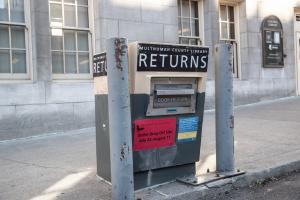|
Greetings!
After several weeks of worrying COVID statistics across the state, the latest numbers have been more encouraging. Our daily counts of new cases have decreased, as has our test positivity rate. That said, scientists are describing Oregon’s coronavirus status as more of a “leveling off” than a sustained decrease. (And we can’t forget the danger this disease still poses: just this week, we’ve heard of the deaths of multiple Portland-area residents who were in their 30s and had no known underlying conditions).
With the school year just around the corner, many are asking what this situation means for classes this fall. We know that kids can get COVID-19; while they are much less likely than adults to experience serious complications, they are very capable of spreading the disease to teachers, staff, and their family members. If we’re not careful, we risk making schools the center of widespread infections in the community.
 Oregon's "Epi Curve" as of today, showing new cases by estimated date of onset. Click to see the data from the Oregon Health Authority.
That’s why Oregon is putting hard numbers to the question of how schools should open. Under the state’s guidelines, a county must see three consecutive weeks of 10 or fewer cases per 100,000 people, as well as a test positivity rate of 5% or less, before schools can resume in-person instruction. (There are some limited exceptions for ESL, special ed, and Career Technical Education students).
Unfortunately, very few Oregon counties currently meet this requirement—Multnomah County certainly doesn’t. And while Oregon’s COVID rate is going down, it is not going down fast enough to allow us to expect in-person schools this fall.
 Both case counts and test positive rates are stablizing. The red line indicates where we would need to be to safely reopen schools. Click on image for larger version
“Distance learning for all” is no one’s ideal. It affects kids, parents and communities. Kids miss out on important social connections and hands-on activities, and many parents have to give up on work, careers, and extra income to stay home with their kids. The impacts are even larger for single-parent families, families of color, and those with lower incomes and unstable housing.
But here is what I know: school districts are doing an incredible job planning for distance learning. I’ve seen the immense amount of work our own Gresham-Barlow School District teachers and staff are doing to make this year as positive, productive, and equitable as possible for every student. I am convinced that distance learning this fall will be better than it was in the spring.
 GBSD begins distributing devices to students September 1. Click for more information.
I am also convinced that protecting the lives of our students, teachers, staff and families is of paramount importance. I am glad our state is putting safety first, even if these are hard decisions to make, and even if we can’t make everyone happy.
So in the meantime, what can we do? In a press conference last week, Governor Brown acknowledged the importance of in-person learning and asked us all help get more kids into classrooms. If we all “step up to the next level” in how we’re complying with current guidelines—that means wearing masks consistently, skipping get-togethers with people outside your household, and isolating effectively if we’re exposed to COVID—we’ll be able to bend that curve to a level where more Oregon schools can open to more Oregon kids.
Governor Brown's options to make safe in-person schooling possible. Click to see larger version.
The other alternative to get to in-person schooling is much more restrictive. There have been calls to close restaurants and gyms, limit travel from other states, and take other actions that would harm our economy. Those ideas are not currently in the works here in Oregon, but they are a possibility if we can’t get to a lower COVID rate soon. Read this article from OPB for more information.
In other words: please be careful out there, and tell your neighbors to be careful, too. Our students are depending on you.
You may have heard on the news about the $500 Oregon Emergency Relief Checks being dispersed through banks and credit unions throughout the state. This is an innovative program designed by legislative leaders to get money into the hands of Oregonians who are still waiting on their Unemployment Insurance funds.
After only three days, the $35 million originally allocated for the program has been spoken for. That means that financial institutions are no longer taking walk-ins or making new appointments. That said, checks are still going out to people who made appointments through the end of August—so if you already have a scheduled appointment with a financial institution, do not cancel it!
In all, this program will help 70,000 Oregonians and their families. I can think of few better uses for $35 million than to keep a roof over someone’s head, buy diapers for a parent in need, or put food on a family’s table. But it didn’t scratch the surface of the need out there. We need the types of resources the federal government can bring to bear. Congress has been discussing a fourth aid package for months now, and I hope we see action soon.
If you’re struggling, there are a number of programs out there to help. I’ve listed a few below:
The Oregon Cares Fund for Black Relief and Resiliency
This first-of-its-kind program targets federal aid to Oregon’s Black community, which has been disproportionately harmed by the COVID crisis. Grants are available to Black families, Black-led organizations, and Black-owned businesses. More information and applications can be found here.
 The Oregon Cares Fund is a targeted grant program to hlep Black people, Black business owners, and black-led nonprofits weather the financial harm caused by COVID-19
Oregon Worker Relief Fund
OWRF provides assistance to immigrant Oregonians who are ineligible for unemployment benefits and stimulus relief. It is funded by a combination of state and private dollars. Learn how to apply here.
Rental assistance
Oregon’s eviction moratorium is in effect through September 30, 2020. That means you cannot be evicted for nonpayment of rent and fees in most circumstances. More information here. Multnomah County has begun dispersing millions of dollars in rental assistance to families affected by COVID-19. More information about eligibility here, or call 2-1-1.
Mortgage assistance
Oregon’s foreclosure moratorium is in effect through September 30, 2020. That means that in many cases your lender cannot begin foreclosure proceedings against you. If you’re having trouble making payments, you should contact your lender; they are required to work with you. More information here, and you can talk with a housing counselor here. The state has allocated mortgage assistance money, which we anticipate will begin going out to Oregonians in August. Stay tuned!
SNAP
If you have recently been laid off or had work hours cut, you may be eligible for SNAP (food benefits). DHS will take changes in your situation into account right away when they determine your benefits, so it can be a great way of getting food on the table. You can fill out a form online or call your local office to apply—more information here.
WIC and TANF
WIC (Women, Infants, and Children) provides food assistance to lower-income pregnant, postpartum, and breastfeeding women. More information here. TANF (Temporary Assistance for Needy Families) provides cash assistance to families with kids. Information about how to apply can be found here.
Other resources
The Oregon Food Bank’s Food Finder provides an interactive map of where you can get food assistance throughout the state, including food pantries and free meal sites. Most locations do not require identification or verification of income. Hunger-Free Oregon’s Food Access and COVID-19 page has a wealth of information about programs. And call 2-1-1 (or visiting 211info.org) for information about COVID, programs to help you, and assistance applying for aid.
I have been deeply concerned by the reports we’re hearing about the changes and delays at the U.S. Postal Service. It’s clear that these changes are coming from the top, and I strongly support Senators Merkley and Wyden as they call for this administration to stop playing politics with our mail.
Of course, Oregonians use the mail to VOTE as well as sending and receiving letters and packages. Oregon has been voting by mail for two decades, so our elections officials have a lot of experience making things run smoothly, and they have good relationships with local post offices and postal workers.
But in this day and age, we can’t be too careful. Oregon’s Attorney General Ellen Rosenblum has signed on to a lawsuit against the Trump administration for interfering with our voting system. Legislators have been discussing the idea of making ballots valid based on when they are postmarked (rather than when they arrive at the Election Division). That would be a great way of eliminating uncertainty for voters who may be unsure about when they need to put their ballot in the mail.

Here in Multnomah County, we’re lucky to have a large number of dropboxes that many can use to bypass this issue altogether. Every Multnomah County Library is now a 24-hour ballot drop location—you just put it in the slot with the books!
I will be keeping a close eye on this issue in the weeks ahead. More to come.
|
Thank you once again for staying safe, kind, and involved. Please don't hesitate to contact my office with any concerns or questions.
Sincerely,
 Carla C. Piluso
State Representative
House District 50, the great city of Gresham
email: Rep.CarlaPiluso@oregonlegislature.gov I phone: 503-986-1450
address: 900 Court St NE, H-491, Salem, OR 97301
website: http://www.oregonlegislature.gov/piluso
|